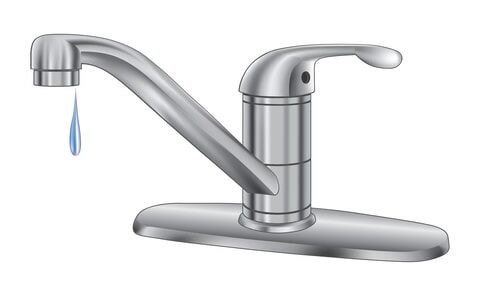
Received a City Utilities bill that is higher than you expected?
If your bill from City Utilities goes up unexpectedly, it could mean you have a plumbing issue or have increased your water usage. Common causes include watering your lawn, filling a pool, students returning home, or having guests.
Water leaks can be annoying and costly. A dripping faucet or running toilet could mean your money is going down the drain. These leaks are often easy to detect and fix, saving you money and reducing waste.
Faucet
A constantly dripping faucet can waste around 150 cubic feet of water a day. Check seldom-used faucets regularly.
Leaks usually occur due to worn seals, washers, or O-rings. Replacing them is often straightforward with the help of online resources or a plumber.
Also check outdoor spigots. A leaking hose or poorly shut tap can waste thousands of cubic feet of water over the summer.
Toilet
Toilets are the most common cause of water leaks and may leak silently. Flush valves and tank floats are common problem areas.
Dye Test Instructions
- Remove the tank lid and any cleaning agents.
- Add a few drops of food coloring or a dye tablet.
- Wait 10–20 minutes without flushing or using the toilet.
- Check if the water in the bowl is colored—if so, the flush valve may be leaking.
- Flush immediately to prevent staining. Parts to fix this are readily available.
Water Heater
Check around your water heater for leaks from the drain valve or top seal.
Water Softener & Reverse Osmosis System
Check cycle times and for any signs of malfunction. You can also test water usage by turning them off for a month.
Heating & Cooling System
For furnaces with humidifiers, ensure the float is not overfilling. With hot water systems or water-cooled AC, a malfunction may raise your bill.
Appliances
Appliances like washing machines, dishwashers, and ice makers can have leaky gaskets or hoses. Routine maintenance helps prevent issues.
Additional Household Members & Guests
More people in your home means more water usage. This is common during holidays and school breaks.
Pool
Filling and maintaining a pool can significantly increase water usage.
Lawn & Garden Watering
Irrigation for lawns and gardens consumes large amounts of water. Be mindful of usage, especially in summer.
Cold Weather Precautions
In freezing weather, protect pipes in exterior walls, basements, or crawl spaces from freezing. Letting faucets drip may help but will increase water usage slightly.
Broken Pipes
Leaks inside walls or crawl spaces may be hard to find. Look for unexplained wet spots or stains. Professional help may be needed.
No Leak Found?
If you've reviewed the checklist and still suspect a leak, call City Utilities at (260) 356-3220.
City Utilities can check the meter or run a 90-day Data Log. However, they cannot inspect your home or business interior—that’s a plumber’s job.